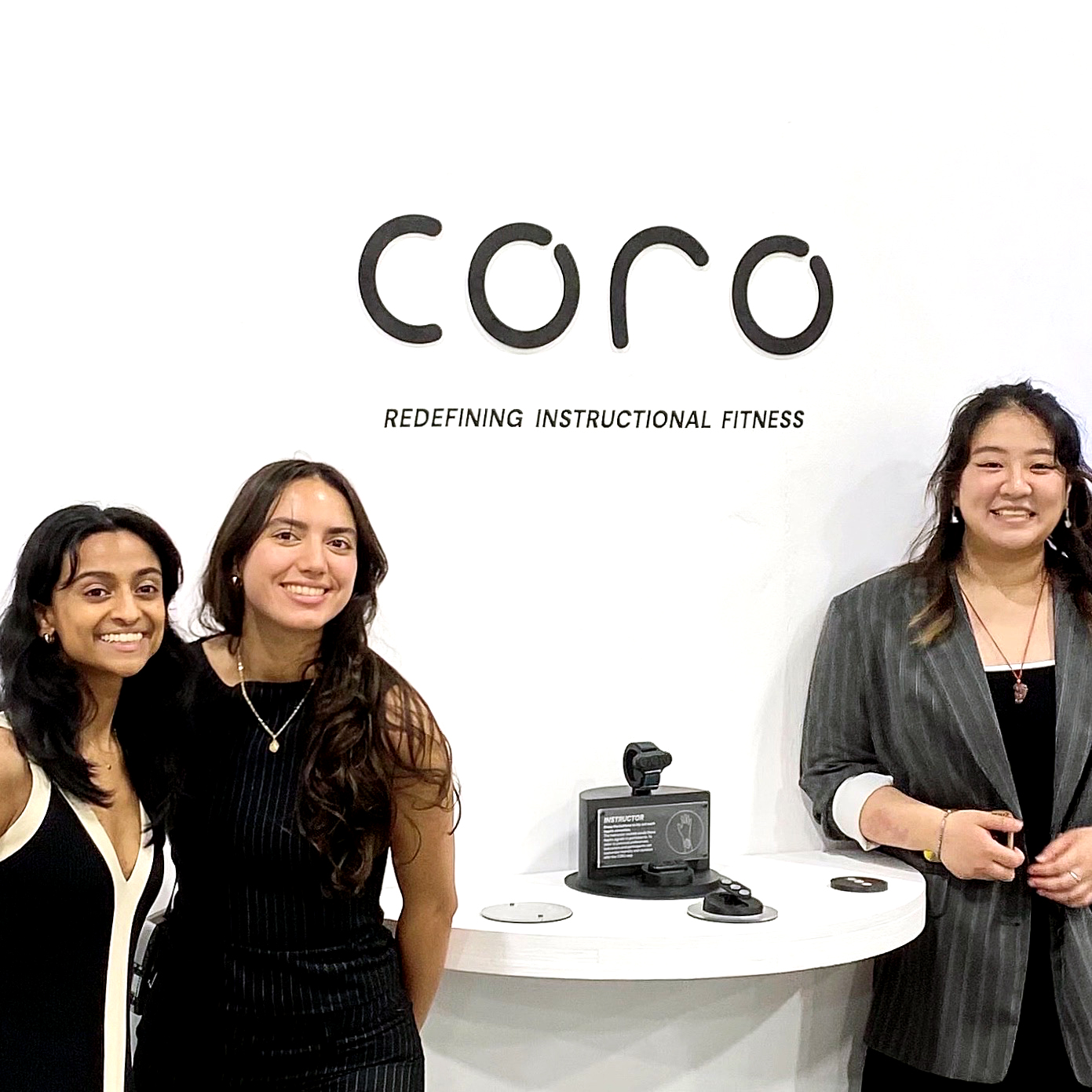What it does
Fitness instructors often rely on audio and visual cues, excluding participants who are Deaf/Hard of Hearing, especially when sightlines are broken. CORO uses wearable haptics to offer discreet, clear movement prompts, helping to make fitness more inclusive.
Your inspiration
As regular group fitness class participants, we saw how these environments create a sense of community and synchronization. During a Yoga class, we noticed how missing a set of audio instructions could lead to being out of sync with the group and a sense of isolation. Our research revealed that while ASL-based or visually-led classes exist, they’re often restrictive in form. CORO explores an alternative: haptics as a new, tactile-based language. Our project helps to streamline accessibility through a new communication alternative, providing a way for Deaf and/or Hard of Hearing users to integrate into any fitness class easily.
How it works
The CORO system includes two bands: one for the instructor and one for the participant. The instructor’s band has three tactile buttons that can wirelessly send signals to the participant’s band, which translates them into haptic cues using three vibration motors. Each button corresponds to a specific cue: 1) A short countdown vibration: a cue to look up for the next move, 2) A single nudge: to switch sides, and 3) A steady metronome: to follow beat-timed movements. With a pairing mobile application, participants can connect their bands to an instructor, and can tweak their vibration settings as needed. During the class, the instructor cues movement by pressing buttons in real time, allowing Deaf/Hard of Hearing users to receive movement prompts, even when not looking directly at the instructor. The CORO system helps all fitness class participants feel confident and included, fully immersed in the shared rhythm of the class.
Design process
We began with user research, learning from Deaf athletes, yoga instructors, and dance educators. At Rochester Institute of Technology’s National Technical Institute for the Deaf, we learned from Matt Dye, Skip Flanagan, and Amy Stornello about strategies used in accessible group movement, from tapping a neighbor to feeling the vibrations of a large drum. We built early prototypes using a single motor to test haptic communication. We iterated on the haptic feedback, upgrading to a set of 3 motors to create an array of tactile feeling. We then worked with a touch interaction expert at Brown, Dr. Louise Manfredi, who highlighted the fingertips and inner wrist as ideal locations. We decided on positioning the Participant band on the inside of the wrist, as a sensitive, yet unobstructive position. We continued refining our haptic cues based on usability testing, setting up mock fitness classes to test for clarity. Throughout our design process, we saw how haptic sensitivity and preferences varied for each participant, so we designed an accompanying mobile application to support users through the setup and sensitivity adjustments. Our final prototype was tested with audio-free instruction at an exhibition, showcasing how the CORO system can help improve synchronization and inclusion.
How it is different
CORO is unique in its creation of a two-way communication system that can be integrated into any style of fitness class. While fitness wearables track data and instructors may rely on written instructions or adapted teaching methods, no existing product offers real-time, tactile cueing that supports both instruction and inclusion. CORO fills that gap. Using three vibration motors and customizable vibration settings, it enables clear delivery of cues from instructor to participant. This added layer of connection reinforces a participant’s sense of inclusion, belonging, and confidence within the group setting. Developed through extensive research with Deaf athletes, instructors, and experts, CORO sets a new standard for communication in group fitness, making the experience more accessible and welcoming for all.
Future plans
In our next steps, we aim to develop a manufacturable version of our devices and test with a broader audience. This includes designing a compact PCB and improving wireless reliability across multiple units. We’ll also build out the app to support full pairing and customizable haptic settings. These updates will enable CORO to integrate into any fitness environment, making movement more accessible. Looking ahead, we see CORO extending beyond fitness: to concerts, flash mobs, or physical therapy. Haptics-based instruction can create a shared rhythm anywhere people move together. CORO lays the groundwork for inclusive, synchronized movement.



Connect